Main menu
Common skin conditions

NEWS
Join DermNet PRO
Read more
Quick links
Necrotising fasciitis
Created 2008.
Learning objectives
- Recognise necrotising fasciitis
Clinical features
Necrotising fasciitis (NF) is infection of the subcutis and deep fascia. It is a surgical emergency, most often due to Streptococcus pyogenes producing pyrogenic exotoxins A, B and C (flesh-eating bacteria, Type 2 NF). It is less frequently polymicrobial (Type 1 NF) or due to Staphylococcus aureus, clostridia (gas gangrene, Type 3 NF) and other organisms.
- NF may follow a surgical procedure or arise in apparently healthy individuals
- It causes severe local pain and systemic toxicity
- The surface may appear normal even when underlying tissue is widely necrotic
- More often there is rapidly advancing erythema, painless ulcers and black necrotic eschar
- Crepitus may occur in clostridial and other anaerobic infections
- Anaerobes result in a foul smell
- Associated with neutrophil leukocytosis, acute renal compromise, acidosis, coagulopathy and hyponatraemia
Necrotising fasciitis Necrotising fasciitis Necrotising fasciitis Necrotising fasciitis Necrotising fasciitis Necrotising fasciitis 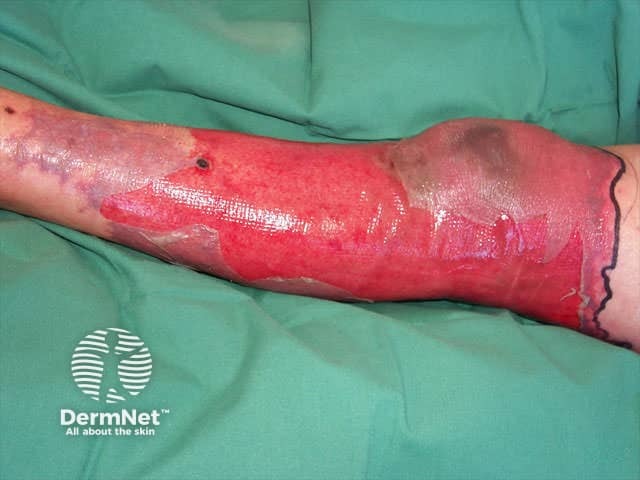
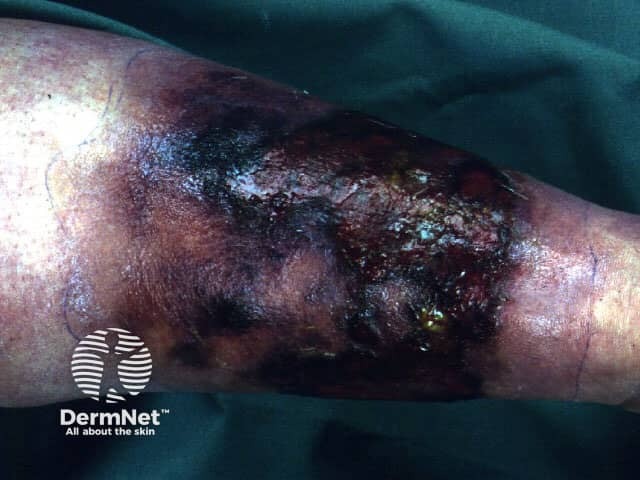
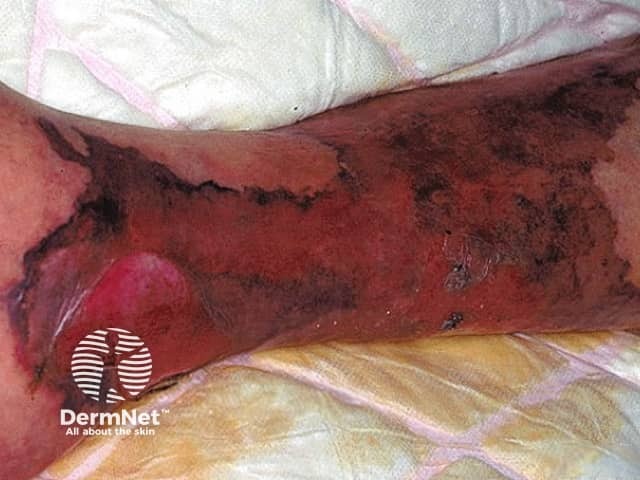
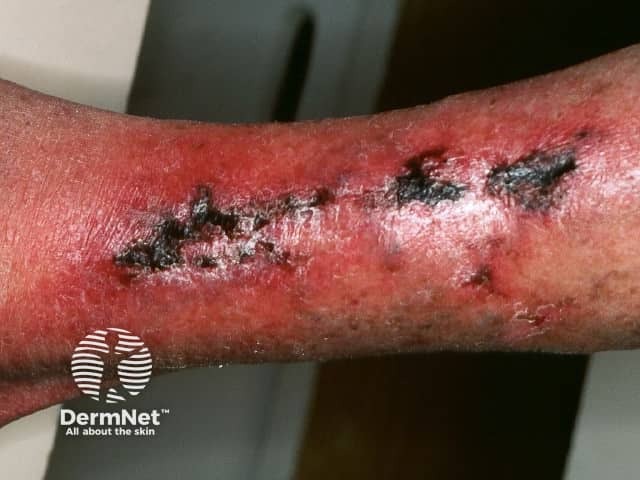


Investigations
The exudate should be gram stained. Rapid streptococcal diagnostic kit and polymerase chain reaction tests may be helpful for diagnosis. MRI or CT scans can be used to delineate the extent of NF.
Management
Management should include:
- Admission to an intensive care unit.
- Broad-spectrum antibiotics – these should be administered immediately, the choice depending on hospital policy (seek the advice of a medical microbiologist).
- Debridement of necrotic tissue thoroughly and immediately by an experienced surgeon as a life-saving procedure. Excision of necrotic tissue may need to be repeated.
Intravenous immunoglobulins may be useful.
Some strains of Streptococci are more pathogenic due to certain extracellular products, toxins and superantigens. These may include cell surface molecules such as the M protein, opacity factor, the hyaluronic acid capsule, C5a peptidase and streptococcal inhibitor of complement (SIC), in addition to secreted proteins, pyrogenic and erythrogenic toxins, exotoxins, cysteine proteinase, streptolysins O and S, hyaluronidase, streptokinase and other enzymes.
After debriding
Necrotising fasciitis aftere debriding 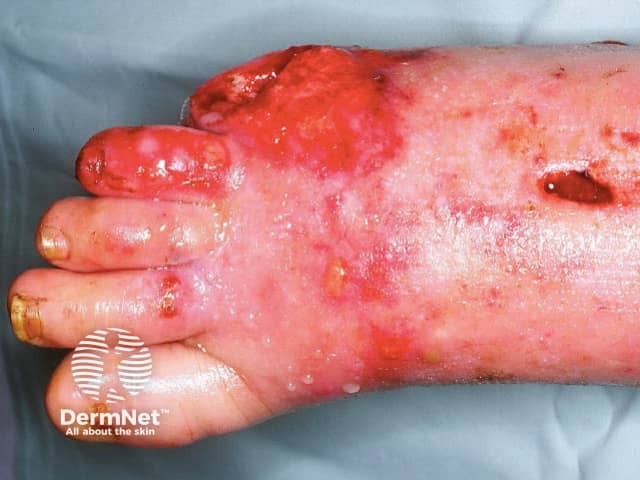
Activity
Find out why non-steroidal anti-inflammatory drugs are contraindicated in the management of necrotising fasciitis.
References:
On DermNet:
Information for patients
Other websites:
- Medscape Reference: Necrotising fasciitis
Books about skin diseases:
See the DermNet bookstore
